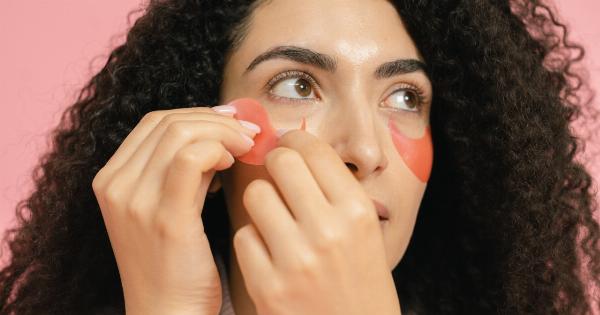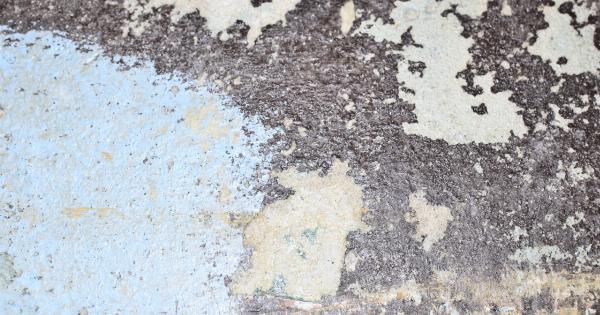Conjunctivitis, commonly known as pink eye, is an inflammation of the conjunctiva, the thin and transparent membrane that covers the white part of the eyes and lines the inner surface of the eyelids.
It can be caused by various factors, including bacterial or viral infections, allergies, or irritants.
Types of Conjunctivitis
There are different types of conjunctivitis, including:.
1. Viral Conjunctivitis
Viral conjunctivitis is highly contagious and is often associated with upper respiratory tract infections, colds, or sore throats. It usually starts in one eye and can spread to the other.
Symptoms may include redness, watery discharge, itching, and light sensitivity. Viral conjunctivitis typically resolves on its own within one to two weeks.
2. Bacterial Conjunctivitis
Bacterial conjunctivitis occurs when bacteria infect the eye. It can cause redness, a sticky discharge, and crusty eyelashes.
Bacterial conjunctivitis is also highly contagious and can be easily transmitted through direct contact with infected hands or objects. Antibiotic eye drops or ointments are commonly prescribed to treat bacterial conjunctivitis.
3. Allergic Conjunctivitis
Allergic conjunctivitis is caused by an allergic reaction to substances such as pollen, dust mites, pet dander, or certain medications. It usually affects both eyes and may result in itching, redness, tearing, and swollen eyelids.
Avoiding allergens and using antihistamine eye drops or oral medications can help relieve allergic conjunctivitis symptoms.
4. Irritant Conjunctivitis
Irritant conjunctivitis occurs when the eye is exposed to irritants such as smoke, chemicals, or foreign objects. It can lead to redness, watering, and a gritty sensation in the eye.
Flushing the eye with clean water and avoiding further exposure to irritants are primary treatments for irritant conjunctivitis.
Treatments for Conjunctivitis
The treatment for conjunctivitis depends on the cause and severity of the condition. Here are some fast-acting treatments:.
1. Warm Compress
Applying a warm compress to the affected eye can help relieve discomfort and reduce inflammation. Soak a clean cloth in warm water, wring it out, and place it gently over the closed eyelid. Repeat this several times a day for 5-10 minutes each time.
2. Artificial Tears
Artificial tears, available over the counter, can help lubricate the eyes and relieve dryness associated with conjunctivitis. These eye drops can provide temporary relief from itching and irritation.
Follow the instructions on the packaging for proper usage.
3. Antibiotic Eye Drops or Ointments
If the conjunctivitis is caused by a bacterial infection, your doctor may prescribe antibiotic eye drops or ointments. These medications can help eliminate the infection and relieve symptoms.
Follow the prescribed dosage and duration recommended by your healthcare provider.
4. Antihistamine Eye Drops or Oral Medications
Allergic conjunctivitis can be managed with over-the-counter antihistamine eye drops or oral medications. These help reduce allergic reactions and relieve symptoms such as itching and redness.
However, it is important to follow the instructions and consult a healthcare professional if symptoms persist.
5. Cold Compress
A cold compress can provide relief from inflammation and swelling associated with conjunctivitis. Wrap ice cubes in a clean cloth and apply gently to the closed eyelid for a few minutes. Avoid direct contact between ice and the skin to prevent ice burns.
6. Good Hygiene Practices
Practicing good hygiene habits can help prevent the spread of conjunctivitis. Avoid touching or rubbing your eyes, wash your hands frequently with soap and water, and use separate towels or tissues for each eye.
Additionally, avoid sharing personal items such as towels or cosmetics.
7. Avoiding Irritants and Allergens
If you have identified the specific irritant or allergen triggering your conjunctivitis, try to avoid exposure. This may involve staying indoors on high pollen count days or using protective eyewear when exposed to irritants such as chemicals or smoke.
8. Prescription Medications
In severe cases of conjunctivitis or when complications arise, your doctor may prescribe stronger medications such as corticosteroid eye drops or oral antibiotics.
These should be used strictly as directed and under the supervision of a healthcare professional.
9. Consultation with a Healthcare Professional
If your conjunctivitis symptoms worsen, persist for more than a few weeks, or are accompanied by severe eye pain, vision changes, or sensitivity to light, it is essential to consult a healthcare professional.
They can provide a proper diagnosis and recommend the most appropriate treatment options.
Prevention Tips
Preventing conjunctivitis involves practicing good hygiene and avoiding known triggers. Here are some tips to reduce the risk of conjunctivitis:.
1. Wash Hands Frequently
Regularly washing your hands with soap and water helps prevent the spread of bacteria and viruses that can cause conjunctivitis. It is especially important to do so after direct contact with infected individuals or surfaces.
2. Avoid Touching or Rubbing Eyes
Avoid touching or rubbing your eyes, as this can introduce bacteria or irritants and potentially worsen the symptoms of conjunctivitis.
3. Use Personal Towels and Cosmetics
Avoid sharing towels, cosmetics, or eye makeup with others. Keeping personal items separate can help prevent the spread of conjunctivitis.
4. Protect Your Eyes
When engaging in activities that may expose your eyes to irritants or foreign objects, wear protective eyewear. This can include safety goggles or glasses.
5. Stay Away from Infected Individuals
If someone you know has conjunctivitis, try to limit contact with them until their symptoms improve. Conjunctivitis can be highly contagious, and reducing exposure can help prevent its spread.






























